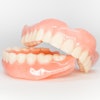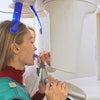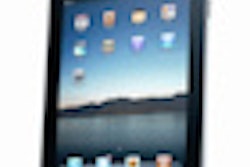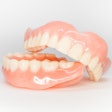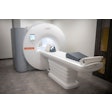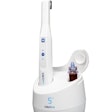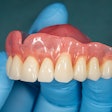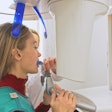
At least one tablet can hold its own against a traditional medical-grade display, according to a recent study. Examiners were able to identify key anatomical landmarks on an iPad Air just as well as on a LCD monitor.
 Aditya Tadinada, BDS, MDS, University of Connecticut School of Dental Medicine.
Aditya Tadinada, BDS, MDS, University of Connecticut School of Dental Medicine.The study evaluated whether examiners would be able to identify 16 landmarks on panoramic radiographs and 12 landmarks on lateral cephalometric radiographs just as clearly on an iPad as on an LCD monitor. The examiners looked at 1,000 digital radiographs on each device and scored each image according to its clarity and appropriateness for diagnostic use (Imaging Science in Dentistry, September 9, 2015).
"The happiest take away for clinicians from this study is to know that tablet computers and their displays perform at par with medical-grade display systems for displaying gross anatomical details of the maxillofacial region," lead author Aditya Tadinada, BDS, MDS, said in an interview with DrBicuspid.com. "For routine tasks like viewing simple images and accessing electronic health records, tablet computers look very promising."
The iPad excels with underexposed images
Today, an increasing number of dental professionals are using tablets for various clinical applications, including viewing radiographs, because they are considerably cheaper and less cumbersome than workstations.
“For routine tasks like viewing simple images and accessing electronic health records, tablet computers look very promising.”
"This is great for both the doctor's use and for patient education and for discussing treatment plans," explained Dr. Tadinada, an assistant professor at the University of Connecticut School of Dental Medicine Division of Oral and Maxillofacial Radiology. "If you look at the average cost of having multiple computers and display screens in each operatory, having a reliable mobile option is an excellent and economic way forward."
While tablets provide a convenient and mobile option for clinics, there are still few scientific articles evaluating whether they are appropriate for technical use in dentistry. Therefore, Dr. Tadinada and colleagues set out to see whether a tablet could prove suitable for viewing digital radiographs.
Two examiners, a senior radiology resident and a senior dental student, viewed a set of 500 panoramic radiographs and 500 lateral radiographs on both an iPad Air and an LCD monitor with 96 dots per inch and a resolution of 1680×1050 pixels with an HP Compaq LA2205wg desktop PC. The images were from an archive at the University of Connecticut School of Dental Medicine, and all were taken between 2005 and 2012 using conventional radiography techniques. They were saved as JPEG files with unadjusted exposure levels and viewed by the examiners in Microsoft Office PowerPoint 2010.
The examiners looked for 16 maxillofacial anatomical landmarks on the panoramic radiographs and 12 on the lateral cephalometric radiographs. They then gave each landmark a score of 0 to 3 based on its visibility on both devices:
- Score of 0: The landmark was not visualized on either of the displays.
- Score of 1: The landmark was visualized on only one display.
- Score of 2: The landmark was visualized on both displays with a level of clarity appropriate for diagnostic use.
- Score of 3: The landmark was visualized on both displays, but especially clear on one or the other.
The researchers found that the difference between the landmarks' clarity on the iPad and LCD monitor was not statistically significant, suggesting that the iPad is appropriate for viewing radiographs in a clinical setting. They also discovered that the iPad is potentially better for viewing underexposed images because of a statistically significant correlation between the level of exposure and clarity of several anatomic landmarks.
"Knowing the resolution of modern-day tablet computers and their technical specifications, I am not very surprised that they performed well at identifying the tasked anatomic landmarks," Dr. Tadinada said.
More research is still to come
While the examiners did view a large number of digital radiographs, there were only two examiners. Also, the study only evaluated one type of tablet for a specific type of function, so the results cannot be generalized for all tablets or when using an iPad Air for other clinical uses.
Dr. Tadinada and his colleagues, however, are very interested in exploring the use of tablets in clinical settings and plans to continue their research.
"We most certainly intend to expand on this study. We want to task the tablet computer with more clinical challenges and also expand into the area of treatment planning and making measurements," Dr. Tadinada said. "Another next step is to evaluate the performance of multiple operating systems and across different platforms."
